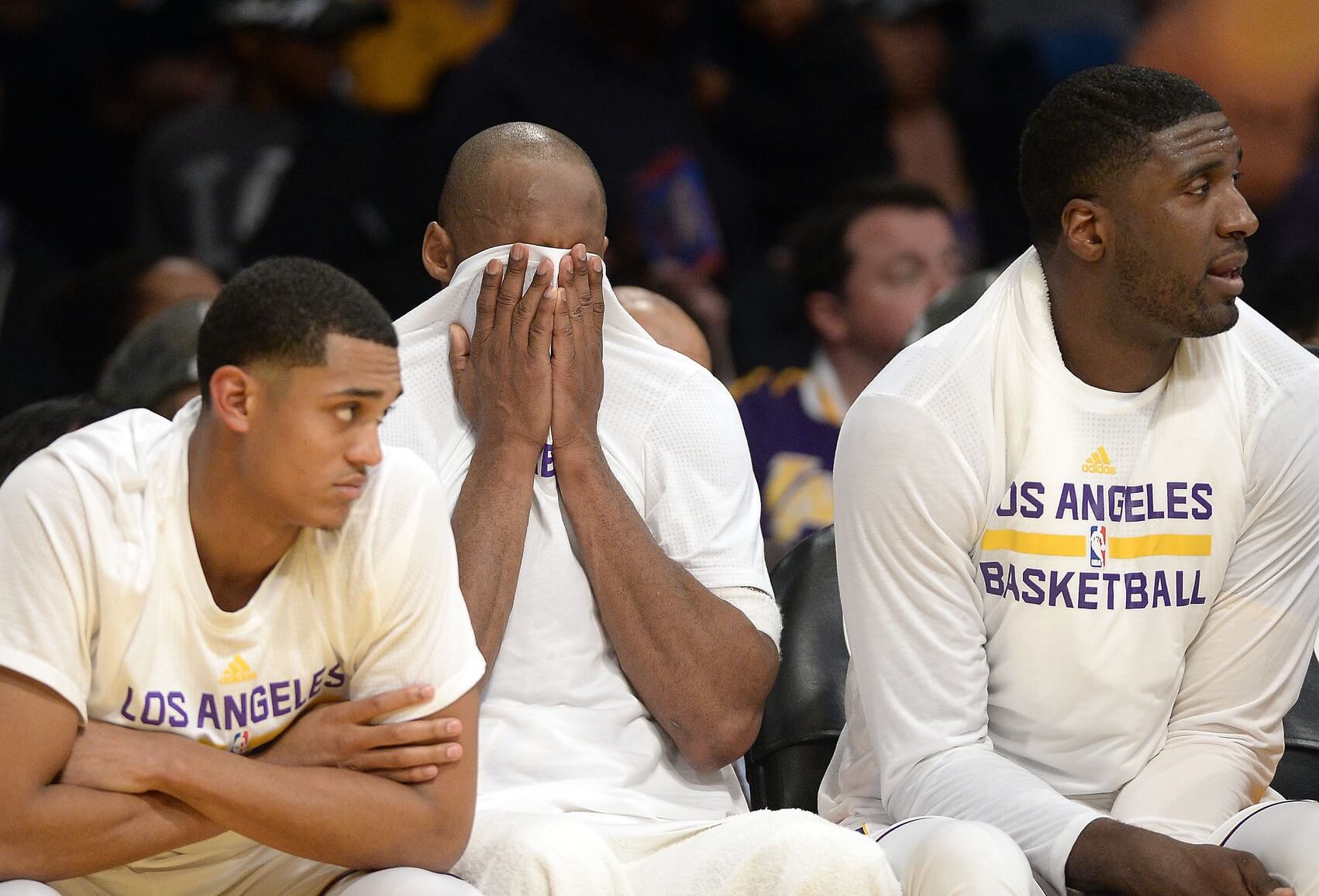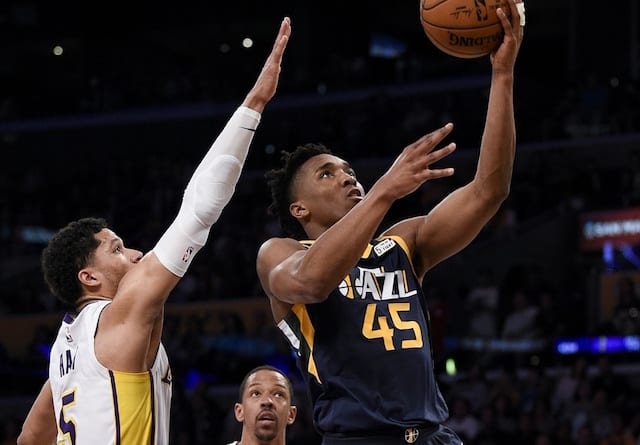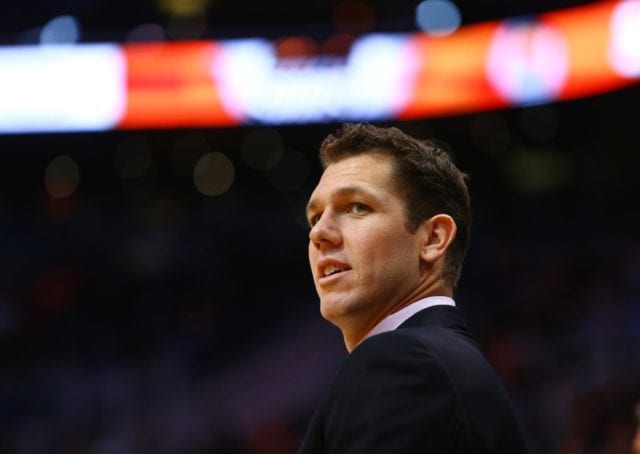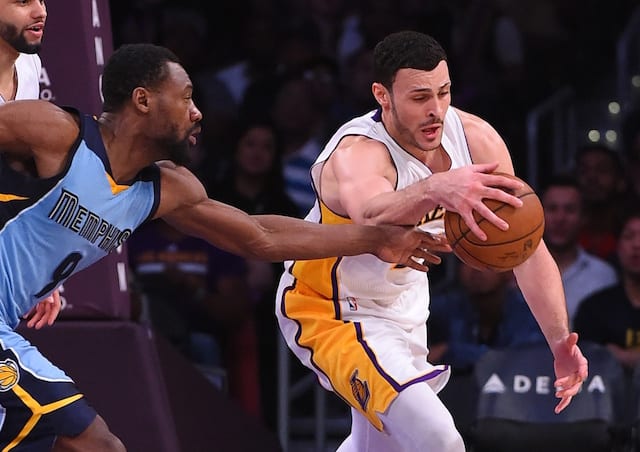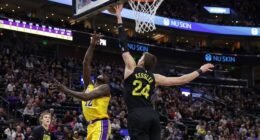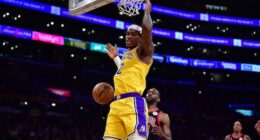As with many other facets of their game, the Los Angeles Lakers offense has gotten off to a slow start. They’ve scored roughly 98 points for every 100 possessions, a decline from last year’s 101 offensive rating and among the bottom three in the NBA this season. Their 46.3 effective field goal percentage, which accounts for both two- and three-point shots, has exhibited a similar downward trend. Were it not for their improved free throw shooting, they’d hardly have much to celebrate.
Of course, with only 13 games played thus far, the sample size is small. It’s entirely possible for the numbers to rise, especially as the Lakers young players develop. But what factors are contributing to their current punchless attack?
First, the Lakers have poor shot selection. When we consider the location and defensive attention of all their shots, we can see that a team of average shooters would yield an “Expected Effective Field Goal Percentage” of 48.6 percent. According to the analytics site Nylon Calculus, this figure ranks in the bottom five league wide. To make matters worse, the Lakers have fallen short of their “XeFG” by a few percentage points.
These numbers come as a surprise in some respects, since the Lakers have made some promising adjustments. Last year, they took the most mid-range jumpers in the NBA, even though they had a lower success rate on them than on corner three-point shots — a red flag for inefficient shooting. At the moment, they’ve actually attempted more shots from behind the arc (332) than from the mid-range (297). That tradeoff is generally sensible, as they’ve earned 0.98 points per three-point attempt compared to 0.76 per mid-range jumper.
The problem is that shot types alone don’t lead to a potent offense. Defensive pressure matters, too, and the Lakers have struggled to overcome or avoid it.
Of their 332 three-point attempts, 35 percent have had a defender within four feet of the shooter. This rate is by far the highest in the NBA, with the Rockets behind them at 25 percent and league average at 19 percent. In other words, the Lakers have taken nearly twice as many contested three-pointers as the typical team, which undercuts many of the benefits that they otherwise would have reaped from going behind the arc. That’s because, while they’ve made 33 percent of their three-pointers overall, their success rate has been just 26 percent on contested ones.
It might be tempting to pin the blame on Kobe Bryant. After all, he’s paced the team with 70 three-point shots, of which 33 have had a defender within close range. But, even if we exclude his numbers, the Lakers contested rate would still be at 31 percent, and their accuracy would only rise to 28 percent. So the issue is systemic, especially when we figure that half of their mid-range jumpers are also contested (among the three highest percentages in the NBA).
If we probe deeper, we find that the Lakers substandard shot selection is at least partially rooted in their ball movement. They complete a mere 270 passes and generate about 19 assists per game, both of which place them among the lowest five in the league. Even the inclusion of non-traditional passing outcomes like free throw assists, secondary assists, and potential assists would keep them in the cellar.
This lack of ball movement affects the bottom line because, as Seth Partnow notes, “every single team in the league is significantly more efficient on assisted than unassisted shots.” It’s particularly consequential for the Lakers. Whereas their effective field goal percentage tends to hover around the high 50s on assisted shots, it drops to the mid-30s on unassisted shots. This gap is among the widest in the NBA and speaks to some potentially deep-seated issues.
There are many other factors at play for the Lakers, including their continued reliance on isolation plays. At the macro level, though, it really boils down to the basics, like getting higher percentage shots and making the extra pass. They may not seem groundbreaking, but they’re exactly what rebuilding teams need.

